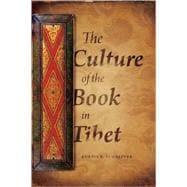
Note: Supplemental materials are not guaranteed with Rental or Used book purchases.
Purchase Benefits
Looking to rent a book? Rent The Culture of the Book in Tibet [ISBN: 9780231147163] for the semester, quarter, and short term or search our site for other textbooks by Schaeffer, Kurtis R.. Renting a textbook can save you up to 90% from the cost of buying.
| Preface | p. vii |
| The Stuff of Books | p. 1 |
| The Editor's Texts | p. 19 |
| The Scholar's Dream | p. 44 |
| The Physician's Lament | p. 73 |
| The King's Canons | p. 90 |
| The Cost of a Priceless Book | p. 120 |
| Epilogue: The Boy Who Wrote Sutras on the Sky | p. 147 |
| Buton Rinchendrup's Letter to Editors | p. 149 |
| The Contents of the Buddhist Canons | p. 151 |
| The Cost of the Canon at Dege | p. 159 |
| Notes | p. 161 |
| References | p. 215 |
| Index | p. 241 |
| Table of Contents provided by Ingram. All Rights Reserved. |
The New copy of this book will include any supplemental materials advertised. Please check the title of the book to determine if it should include any access cards, study guides, lab manuals, CDs, etc.
The Used, Rental and eBook copies of this book are not guaranteed to include any supplemental materials. Typically, only the book itself is included. This is true even if the title states it includes any access cards, study guides, lab manuals, CDs, etc.